Jamaican Feverplant, Nohu, False Puncture Vine, Spiny-fruited Caltrop - Tribulus cistoides
|
Tribulus cistoides - Jamaican Feverplant, Nohu, False Puncture Vine, Spiny-fruited Caltrop.
Tribulus is a small genus of around 25 species of the tropics and subtropics, although the exact number is not determined with some authorities recognizing only 7 with up to 70 species and subspecies being under review. There is some dispute as to whether any Tribulus species are native to the Americas, and especially the United States, but the University of Hawaii lists Tribulus cistoides as indigenous to the Hawaiian Islands, and it seems likely that other species are native to the tropics of North America. No species are native to the continental United States, but one other species has also been introduced and survives in parts of the country. Tribulus terrestris is widely spread throughout the United States, especially in the drier western states, and may be the most widely distributed Tribulus species in the world. This may be partly due to its use as a dietary supplement reported to increase testosterone levels. It is a problem weed in parts of the country.
While Tribulus cistoides may be native to Hawaii, it is introduced and has relatively small distribution in the rest of the country, being found only in a few southeastern states, with the widest distribution in Florida - it is primarily a tropical species. According to the University of Florida Center for Aquatic and Invasive Plants Tribulus cistoides is used medicinally for headaches, nervous disorders, and constipation.
Found in:
AL, FL, GA, HI, LA, MS, TX
Leave comments on Tribulus cistoides at this link. | 
Distribution of Tribulus cistoides in the United States and Canada:
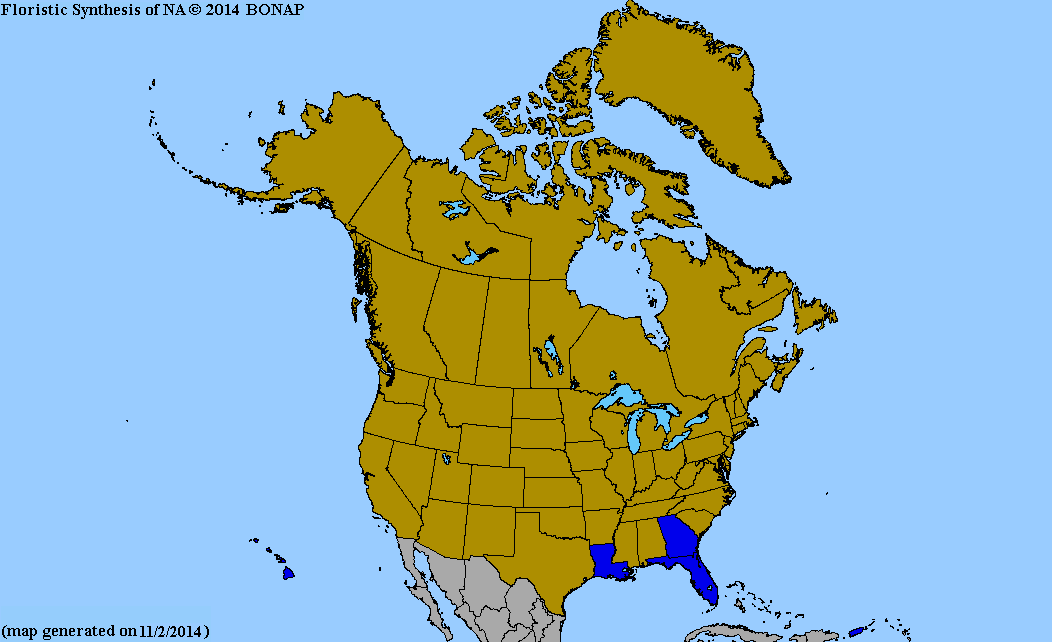
Map courtesy of The Biota of North America Program.
Map color key
Search Our Database: Enter any portion of the Scientific, Common Name, or both.
Do a general Google search of the entire site:
#ad
 Follow USWildflowers on Twitter
#ad
| | Site: Coquina Beach, Anna Maria Island, Manatee County, FL Date: 2015-December-15 | Photographer: Gerald C. Williamson
Nikon D7000
Tamron SP 90MM f/2.8 AF Macro | | Tribulus cistoides has 5 bright yellow petals each up to about 1/2 inch long and 1/4 inch wide. The flower is usually less than an inch across. | | 
| | Site: Coquina Beach, Anna Maria Island, Manatee County, FL Date: 2015-December-15 | Photographer: Gerald C Williamson
Nikon D7000 | | Tribulus cistoides is a low-growing procumbent vine with the flowers on pedicels less than 2 inches long. | | Click on the photo for a larger image
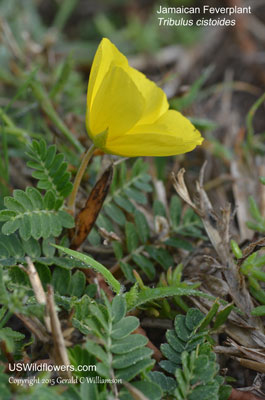
| | Site: Florida Date: | Photographer: Steve Hurst, USDA, NRCS. 2019. The PLANTS Database (http://plants.usda.gov, 29 January 2019). National Plant Data Team | | The common name of Puncture Vine comes from the spiny fruit, which can cause painful skin punctures when stepped on - even through thin-soled shoes. The University of Hawaii Native Plants website says "these have some mean spines that show no mercy!" The common name Nohu is also the Hawaiian name applied to the poisonous-spined scorpionfish, although the spines of Tribulus cistoides are not poisonous, just painful. The seeds are sometimes spread by sticking to tires of bicycles, farm equipment, and automobiles as well as clothing and shoes. | | Click on the photo for a larger image
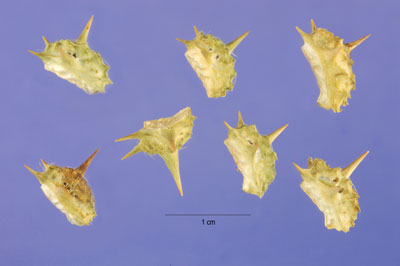
| | Site: Coquina Beach, Anna Maria Island, Manatee County, FL Date: 2015-December-15 | Photographer: Gerald C Williamson
Nikon D7000 | | The leaves of Jamaican Feverplant are opposite and even-pinnately compound. The leaves may be up to nearly 4 inches long with up to 9 pairs of somewhat oblong leaflets, each of which are up to about 1/4 inch long. The young stems are hairy with either spreading or appressed hairs, but they may become glabrous with age. | | Click on the photo for a larger image
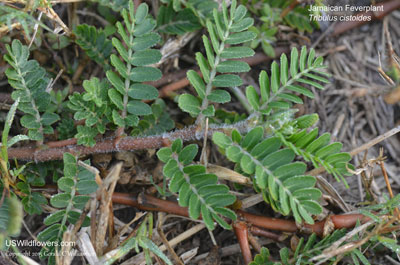
| | Site: Coquina Beach, Anna Maria Island, Manatee County, FL Date: 2015-December-15 | Photographer: Gerald C Williamson
Nikon D7000 | | Tribulus cistoides is a spreading, procumbent vine (it doesn't root along the stem.) A single plant can cover an area more than 6 feet across, with some reports of mats more than 20 feet across. It can be a good groundcover, but only in areas where you will not be walking or where children may play due to the spiny seeds. The seeds can also puncture the tires of bicycles. | | Click on the photo for a larger image
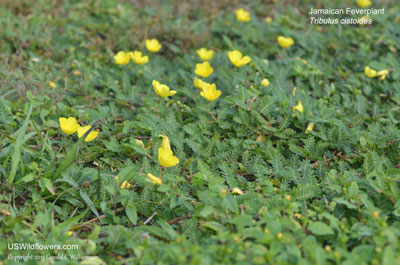
| | Site: Coquina Beach, Anna Maria Island, Manatee County, FL Date: 2015-December-15 | Photographer: Gerald C Williamson
Nikon D7000 | | The yellow stamens are whorled around the pistil and are a little less than 1/2 inch long. | | Click on the photo for a larger image
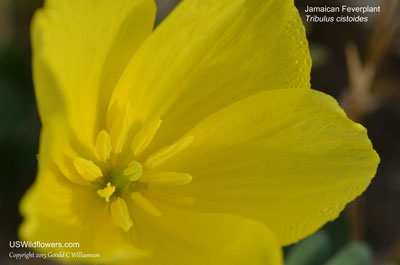
|
References used for identification and information:
|
|
| |
| #ad
|
|








